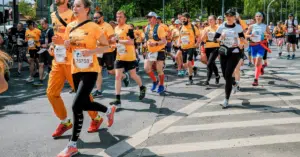Compression Stockings or socks are specially designed socks that are a little tighter than regular socks. They help you with blood circulation in your legs and keep the warmth. Patients having Deep Vein Thrombosis and other blood clotting issues may use these compression socks. Most soccer players also use such compression socks to maintain their athletic performance. Just like soccer players, athletes wear compression socks for exercise.
Compression socks come in different sizes and lengths. You may also find a few without feet called compression sleeves. Compression garments are always available in various sizes to meet people’s requirements. There is robust evidence that these compression socks work and improve body performance.
In this guide, you will be able to know what compression socks are and whether you should wear them while exercising.
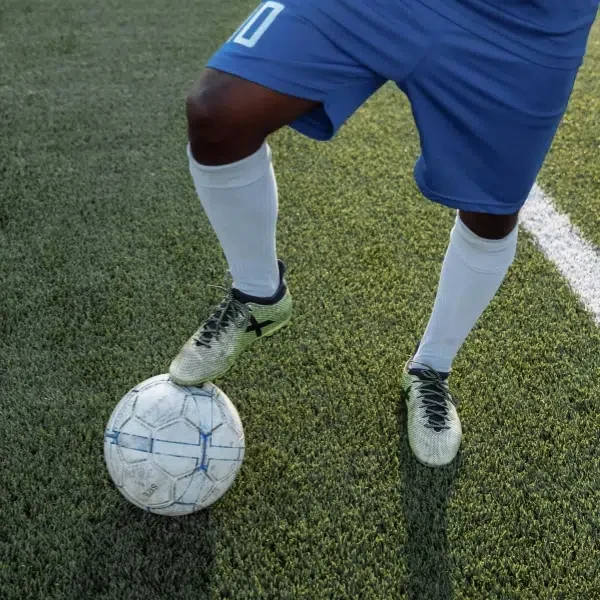
What are Compression Socks?
Compression socks, also known as compression stockings, are used to maintain blood circulation in your legs. They use graduated compression, where the compression level decreases from the ankle to the top of the socks. It helps the blood flow towards the heart well and offers lesser resistance against gravity.
There are many different materials used in compression socks, including nylon, Lycra, Spandex, polyester, merino wool, copper-infused yarns, etc. The quantity of these materials may vary in different types of compression socks. Usually, Nylon, Spandex, and polyester play a huge role in maintaining the correct compression levels.
How do Compression Socks Work?
The primary purpose of compression socks is to maintain the blood flow in your body, especially your legs. The blood flows freely through the arteries and veins and takes that blood back to your heart through a significant push provided by the body. So, more oxygen flows through the arteries, prevents swelling, and helps in quicker recovery.
If there is a clot in your veins, it can create pain and swelling in your legs. It could be the worst case if that clot passes through the veins and gets stuck somewhere else, like the lungs, causing a dangerous pulmonary embolism (PE). The energy levels start to decrease, and you begin feeling circulatory issues.
Here, compression socks come in handy to prevent your legs from having blood clots. They provide the right amount of compression in your legs to maintain a certain pressure and keep the blood circulation going correctly. When there is an improved blood flow, you might see improvement in swelling and pain in the affected areas.
Also, there could be another case you often encounter where high-intensity exercise causes muscle pain in your lower legs. It’s time to consider incorporating compression socks into your exercise routine to alleviate muscle soreness commonly experienced after high-intensity workouts, especially if you exercise regularly.
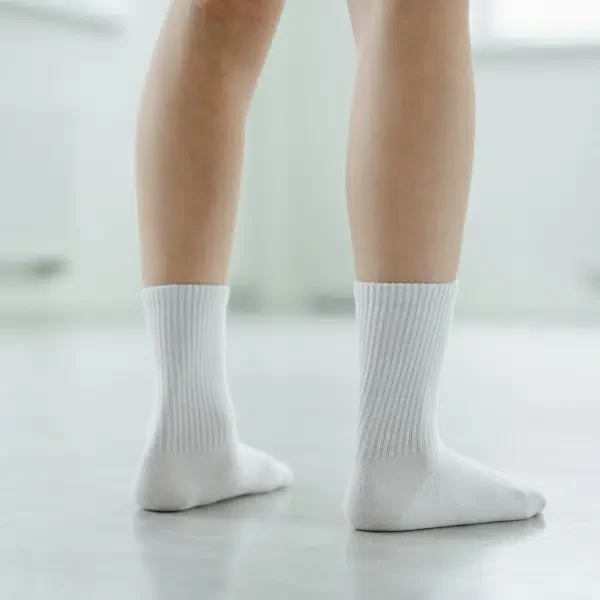
Do Compression Socks Help in Exercise?
Most athletes are used to wearing compression socks to keep the blood flowing right in their legs. Heavy workouts and running could cause pain and disturb the blood flow in the lower parts of the body. The calf muscles are pulled after high-intensity exercises. The athletic performance of an athlete decreases, too.
Soccer players often use compression socks during exercise recovery and practice. And they use them to reduce muscle soreness as well. So, most athletes suggest compression socks while doing physical activity. Compression socks work perfectly well and help you avoid delayed onset muscle soreness. It would be great to wear compression socks during exercise.
How Compression Socks Work For Exercise? Is it Safe to Wear them?
Firstly, wearing compression socks doesn’t harm when you wear them while exercising. But you need to see if they are a good fit. So, how do compression socks work for exercise?
Compression socks provide extra pressure towards the ankle and lower leg when you work out. The pressure of these compression socks decreases upwards, so blood efficiently circulates towards the heart, keeping your leg muscles relaxed.
Besides, The tight hold of the compression socks provides extra support while exercising. Even if you ramp up the intensity of your exercise, like running, jumping, and quick sideways movement, compression socks always make you feel lighter and keep the calf muscles relaxed.

Post-Exercise Working of Compression Socks
It’s noteworthy that compression socks offer post-workout benefits as well. When there is improved blood circulation in the lower legs, you don’t feel tired if you do extra workouts. It makes you feel fresh and motivated when you aren’t tired. It is now proven that if you are in the recovery phase after an injury, you must wear compression socks to reduce extra pressure on your legs through good blood circulation in the body.
Benefits of Wearing Compression Socks for Exercise

Better Blood Circulation
One thing is clear: Wearing compression socks for exercise helps maintain normal blood flow in your legs and ensures optimal circulation throughout your workout. It is vital to wear compression socks if you’re new at the gym or just planning to start heavy workouts.
If you are at risk of having blood clots, it’s crucial not to overlook the importance of using compression socks. They will certainly help eliminate the clotting issues. It reduces the risks of fluids in the ankles and prevents lactic acid from forming in your lower extremities.
Reduce Muscle Soreness and Fatigue
You exercise to develop your muscles or keep them in good shape. When the exercises go to extreme levels, your muscles could get stressed, and there are chances that you will feel soreness. So, compression socks help your muscles get rich oxygen through arteries along with nutrients needed to develop your muscles.
Support and Prevention from Injuries
The tight compression provided by graduated compression stockings exerts less strain on joints and ankles. It gives you extra stability while exercising and reduces the risk of another ankle or joint issue.
Reduce Swelling and Prevent Edema
Compression socks prevent blood pooling around the ankles as they provide tightness in your legs, keeping better blood flow by delivering medium compression. There are greater chances of reduced leg swelling when blood passes through the veins. When you see improvement in swelling, you could eradicate the concerns about edema and deep vein thrombosis.
Recommendation of Compression Socks for Specific Exercises
Compression socks for exercise provide enough compression in your legs, ankles, and feet. So, all the exercises that involve these three body parts allow you to wear compressor socks. These exercises might include:
· Running and Long-distance walks
· Cycling
· Dancing and yoga
· Jumps and wall climbing
· Lifting heavy weights
· Playing Football, Soccer, Tennis, Badminton, and all other games where you often need to change your movement direction.
· Pilates
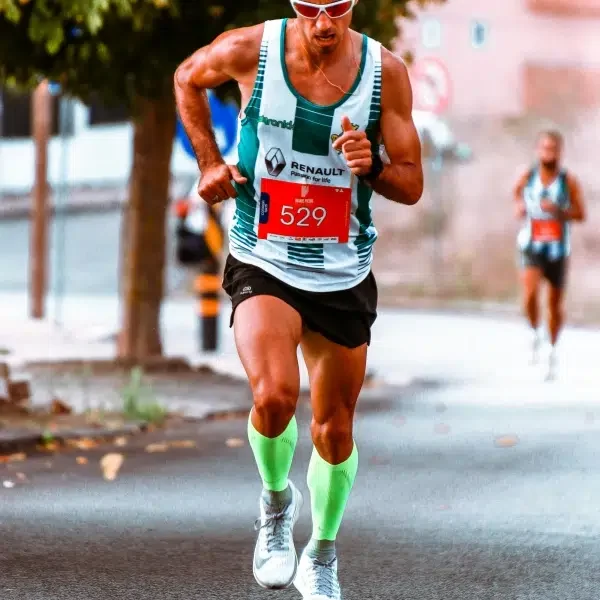
How Long Do You Need to Wear Compression Socks for Exercise?
When it comes to recovery, you can wear compression socks as long as you want or feel comfortable. The timescales are not important; you just need to listen to your body. If you feel good, keep them. When you start feeling uncomfortable, take them off.
If you’re a first-time user, you must wear compression socks before exercise, probably 2-3 hours before any workouts. When you feel used to it, you can start doing your exercise or game.
A high-intensity workout or running could cause leg muscle soreness and disturb the circulatory system. It could even cause chronic venous insufficiency. So, you should wear compression socks during exercise. Reduced muscle soreness is observed in people who wear compression socks when they exercise.
How Do You Take Care of Your Compression Socks?
If you want to keep your compression socks longer, hand washing them every time is a good way. Use a mild detergent to wash them. Bleach is definitely not a good choice for cleaning them. Let the socks dry naturally, and don’t use a dryer for this purpose.
The tightness stays when you don’t stretch the socks too much while using them. So, don’t pull them too much and take care of the fibers.
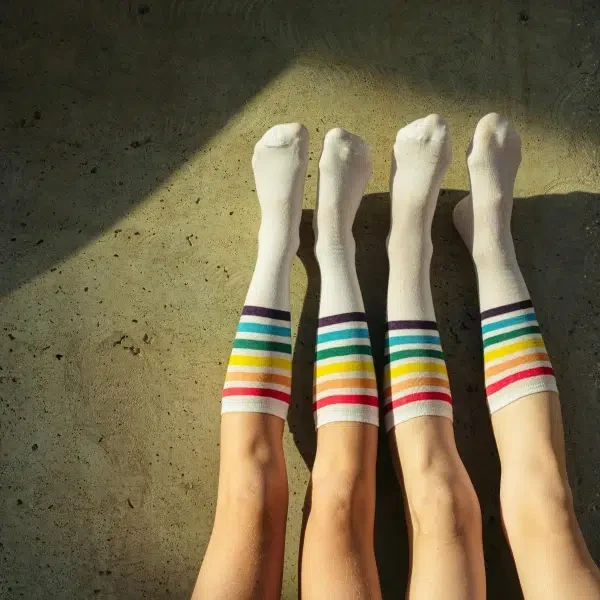
Conclusion
Graduated Compression socks have served many people and made their lives better. They are built to improve circulation in your lower legs when you wear socks while exercising to avoid pain after hard workouts. Athletes, pregnant women, and patients with diseases like painful swelling and pain in the legs do wear such socks.
However, different types of socks are available, and you need to pick them wisely. Look for compression socks for exercise that fit well. So, you can enjoy yourself more while exercising.


